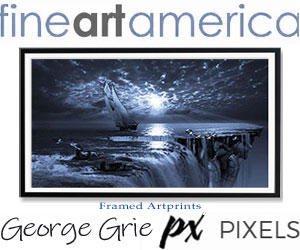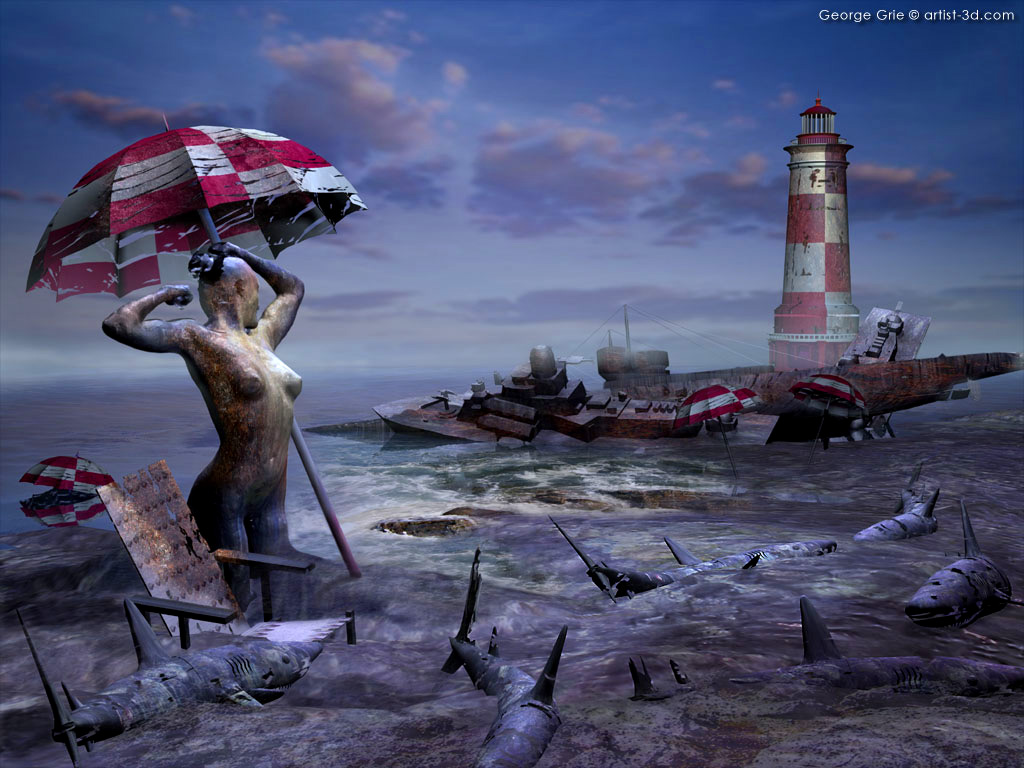· Home |
· CoverArt |
· Paintings |
· PrintShop |
· NFTs |
· Licensing |
· Contact |
| NeoSurrealismArt.com Neo-surrealism Art Gallery - official website of the popular computer graphic artist George Grie. The gallery presents iconic modern surrealist dreams such as dark gothic, inspirational romanticism, famous digital surrealism artworks, and fine-art paintings. Giclee prints and posters, limited editions, desktop wallpapers, and framed art pictures for sale.
• Publications • Art prints & posters • BookStore • Biography • Interviews • Manifesto • Chronological Index |
 |
| page 1 · 2 · 3 · 4 · 5 · 6 · 7 · 8 · 9 · 10 ... |

Modern Surrealism Fantasy Art 3D Pictures: George Grie 3d wallpaper. Guardian of Time digital fantasy contemporary surrealist.
| |||||||||||||||||||||||||||||||||||||||||||||||||||||||||
MANIFESTO OF SURREALISM MOVEMENT by famous surrealist artist Andre Breton || 18 pages |
||||||||||||||||||
page # |
||||||||||||||||||
shocking the reader. I had the illusion of a possible complicity, which I had more and more difficulty giving up. I had begun to cherish words excessively for the space they allow around them, for their tangencies with countless other words which I did not utter. The poem BLACK FOREST derives precisely from this state of mind. It took me six months to write it, and you may take my word for it that I did not rest a single day. But this stemmed from the opinion I had of myself in those days, which was high, please don't judge me too harshly. I enjoy these stupid confessions. At that point cubist pseudo-poetry was trying to get a foothold, but it had emerged defenseless from Picasso's brain, and I was thought to be as dull as dishwater (and still am). I had a sneaking suspicion, moreover, that from the viewpoint of poetry I was off on the wrong road, but I hedged my bet as best I could, defying lyricism with salvos of definitions and formulas (the Dada phenomena were waiting in the wings, ready to come on stage) and pretending to search for an application of poetry to advertising (I went so far as to claim that the world would end, not with a good book but with a beautiful advertisement for heaven or for hell). In those days, a man at least as boring as I, Pierre Reverdy, was writing: The image is a pure creation of the mind. It cannot be born from a comparison but from a juxtaposition of two more or less distant realities. The more the relationship between the two juxtaposed realities is distant and true, the stronger the image will be -- the greater its emotional power and poetic reality...* (Nord-Sud, March 1918) These words, however sibylline for the uninitiated, were extremely revealing, and I pondered them for a long time. But the image eluded me. Reverdy's aesthetic, a completely a posteriori aesthetic, led me to mistake the effects for the causes. It was in the midst of all this that I renounced irrevocably my point of view. One evening, therefore, before I fell asleep, I perceived, so clearly articulated that it was impossible to change a word, but nonetheless removed from the sound of any voice, a rather strange phrase which came to me without any apparent relationship to the events in which, my consciousness agrees, I was then involved, a phrase which seemed to me insistent, a phrase, if I may be so bold, which was knocking at the window. I took cursory note of it and prepared to move on when its organic character caught my attention. Actually, this phrase astonished me: unfortunately I cannot remember it exactly, but it was something like: "There is a man cut in two by the window," but there could be no question of ambiguity, accompanied as it was by the faint visual image* (Were I a painter, this visual depiction would doubtless have become more important for me than the other. It was most certainly my previous predispositions which decided the matter. Since that day, I have had occasion to concentrate my attention voluntarily on similar apparitions, and I know they are fully as clear as auditory phenomena. With a pencil and white sheet of paper to hand, I could easily trace their outlines. Here again it is not a matter of drawing, but simply of tracing. I could thus depict a tree, a wave, a musical instrument, all manner of things of which I am presently incapable of providing even the roughest sketch. I would plunge into it, convinced that I would find my way again, in a maze of lines which at first glance would seem to be going nowhere. And, upon opening my eyes, I would get the very strong impression of something "never seen." The proof of what I am saying has been provided many times by Robert Desnos: to be convinced, one has only to leaf through the pages of issue number 36 of Feuilles libres which contains several of his drawings (Romeo and Juliet, A Man Died This Morning, etc.) which were taken by this magazine as the drawings of a madman and published as such.) of a man walking cut half way up by a window perpendicular to the axis of his body. Beyond the slightest shadow of a doubt, what I saw was the simple reconstruction in space of a man leaning out a window. But this window having shifted with the man, I realized that I was dealing with an image of a fairly rare sort, and all I could think of was to incorporate it into my material for poetic construction. No sooner had I granted it this capacity than it was in fact succeeded by a whole series of phrases, with only brief pauses between them, which surprised me only slightly less and left me with the impression of their being so gratuitous that the control I had then exercised upon myself seemed to me illusory and all I could think of was putting an end to the interminable quarrel raging within me.* (Knut Hamsum ascribes this sort of revelation to which I had been subjected as deriving from hunger, and he may not be wrong. (The fact is I did not eat every day during that period of my life). Most certainly the manifestations that he describes in these terms are clearly the same: |
||||||||||||||||||
| page 1 · 2 · 3 · 4 · 5 · 6 · 7 · 8 · 9 · 10 ... |
Modern Romantic Surrealist Artist· Gothic Surrealism Art Poster Prints · Surreal Limited Editon Pictures & Books |